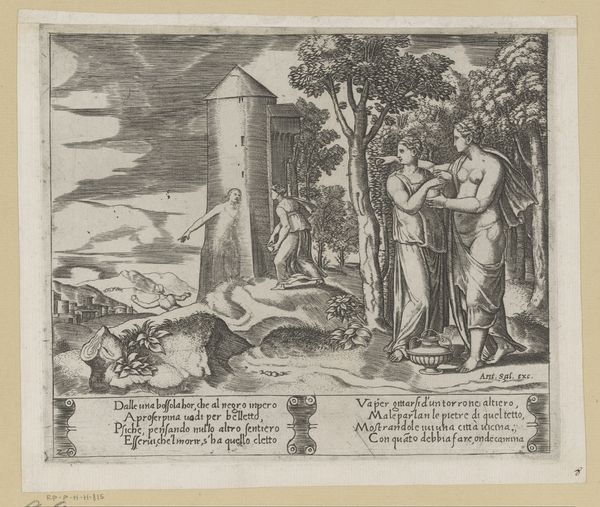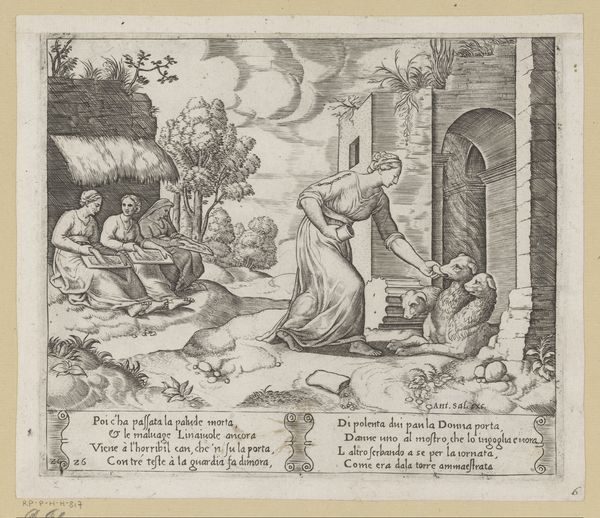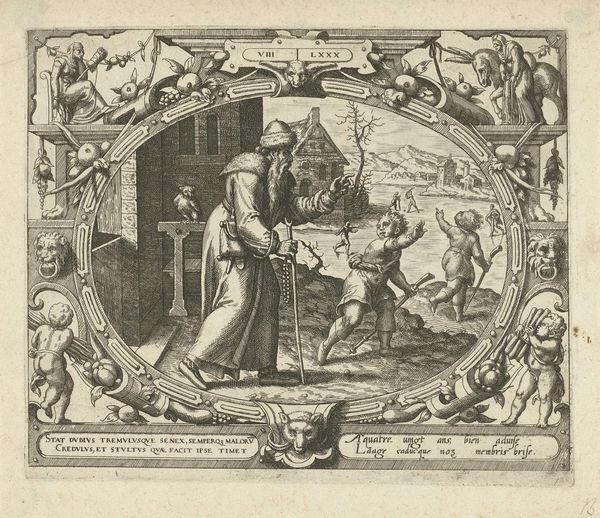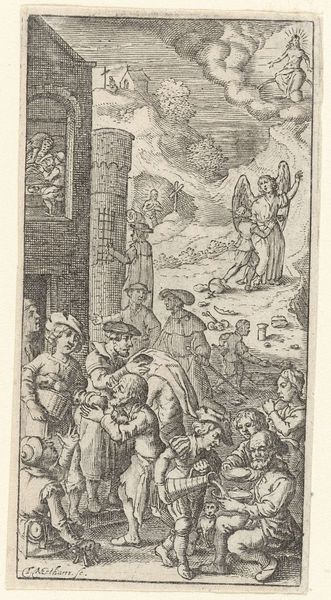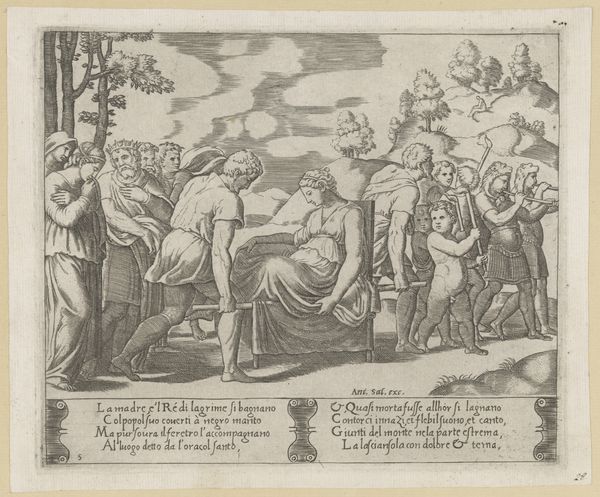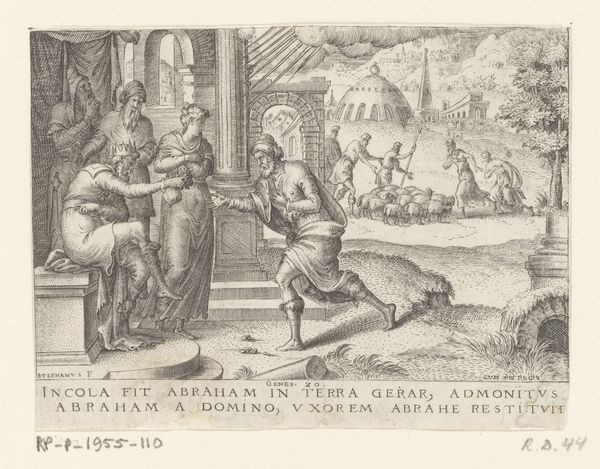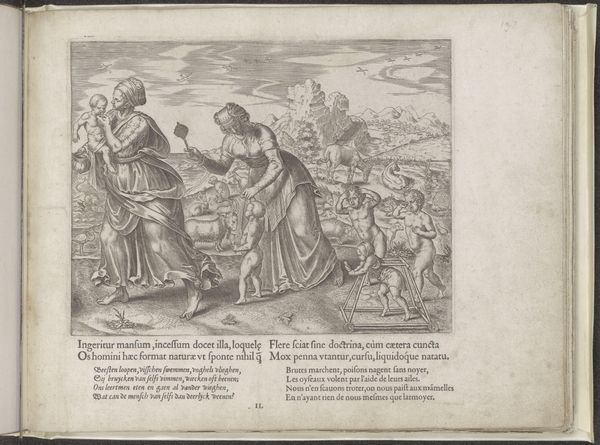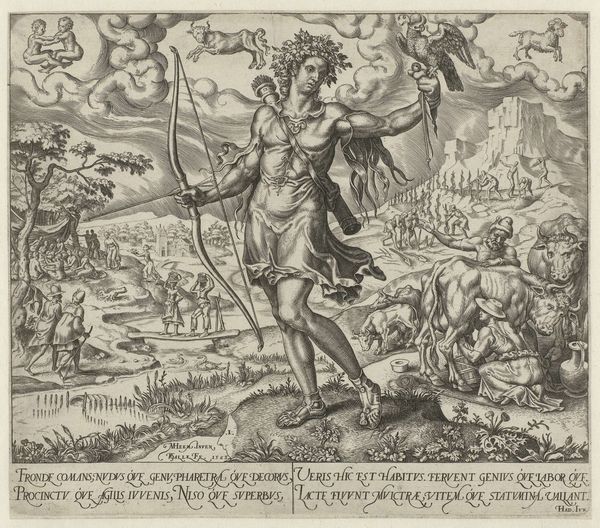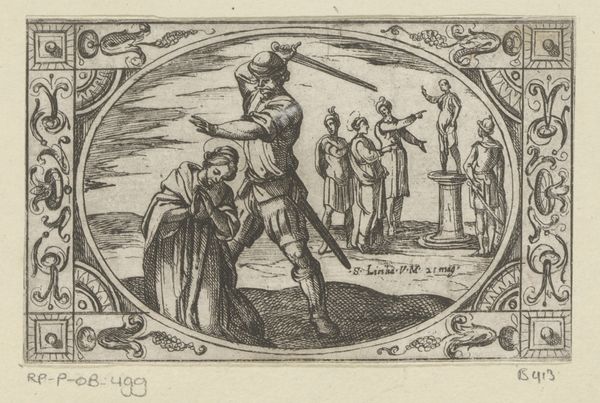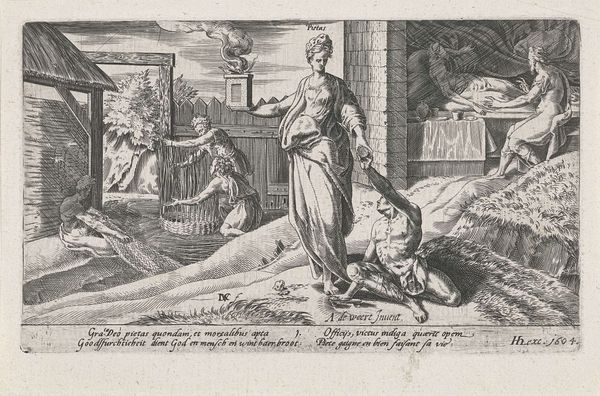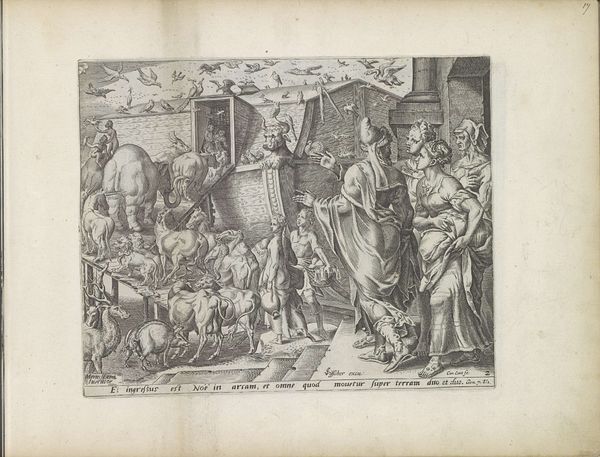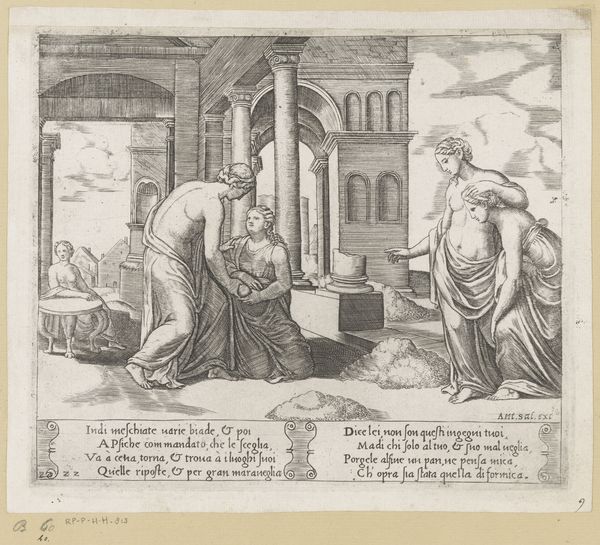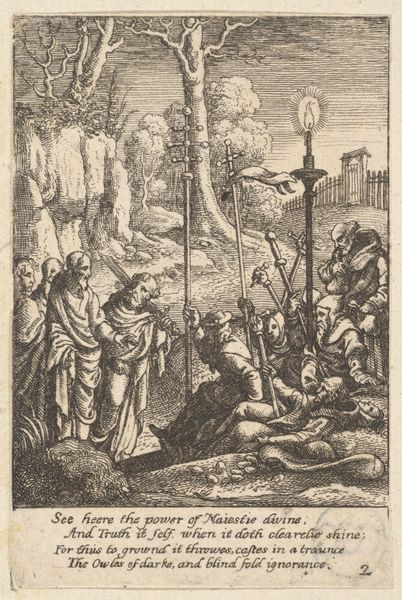
Psyche opent de kruik met Proserpina's schoonheid c. 1530 - 1560
0:00
0:00
meestervandedobbelsteen
Rijksmuseum
print, intaglio, engraving
#
allegory
#
narrative-art
# print
#
pen sketch
#
intaglio
#
old engraving style
#
figuration
#
11_renaissance
#
italian-renaissance
#
engraving
Dimensions: height 195 mm, width 227 mm
Copyright: Rijks Museum: Open Domain
Curator: We're looking at "Psyche Opens the Jar of Proserpina's Beauty," an engraving dating back to approximately 1530-1560, attributed to the Master of the Die. It’s part of the Rijksmuseum's collection. Editor: It's striking how delicate the lines are for an engraving. The texture feels almost like a pen sketch, a fragile quality, considering the subject matter—the opening of a jar that promises trouble. Curator: Absolutely. This print captures a key moment from the story of Cupid and Psyche, specifically Psyche's descent to the underworld. We see her accepting the jar from Cupid to gather Proserpina's beauty for Venus, but of course, she’s tempted to open it herself. Editor: The process of engraving itself—the labor involved in meticulously carving these scenes into a plate—resonates with Psyche's own laborious tasks. The repetitive action mirrors the persistence needed for the completion of these endeavors. It would have taken dedication and a level of artistry to create a plate so full of such subtle changes. Curator: Indeed. The Italian Renaissance was fascinated by classical myths. This image served as an accessible means of circulating and visualizing such stories, embedding classical morality and narrative within Renaissance culture. It served as a visual representation of moral choices, a tale that carried consequences of human weakness in a broader cultural discourse. Editor: Consider how readily this engraving would be consumed. Its form allowed mass reproduction and wide circulation, bringing allegorical lessons such as this to an audience well beyond a noble class, where grander art projects, such as painting or sculpture, might have been more visible. Curator: That distribution shaped the public perception and understanding of classical myths. Editor: Seeing it now, I’m even more impressed by the subtle interplay of classical knowledge and material culture that made such accessibility possible. Curator: It's quite telling how much historical depth lies within this relatively small print.
Comments
No comments
Be the first to comment and join the conversation on the ultimate creative platform.
